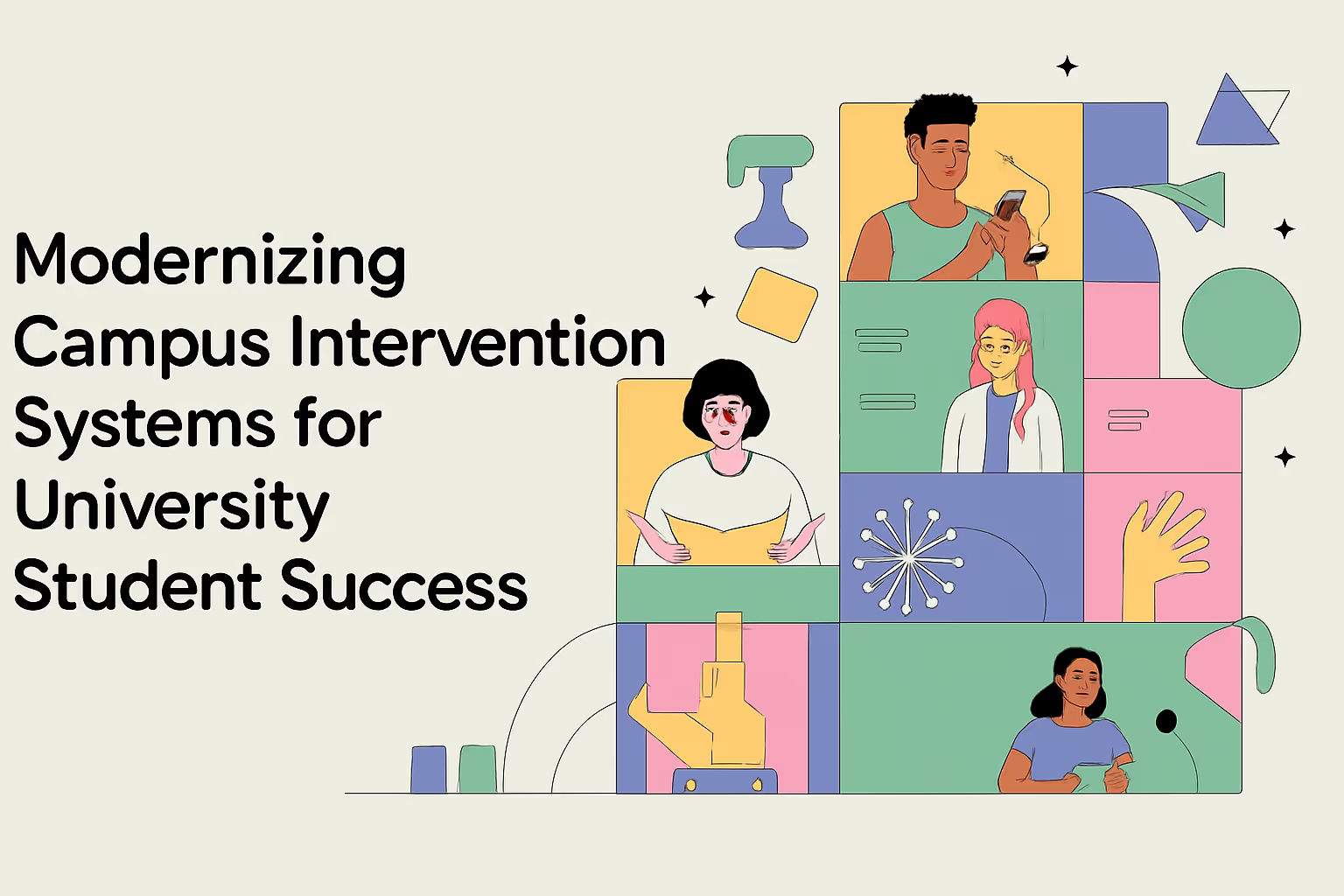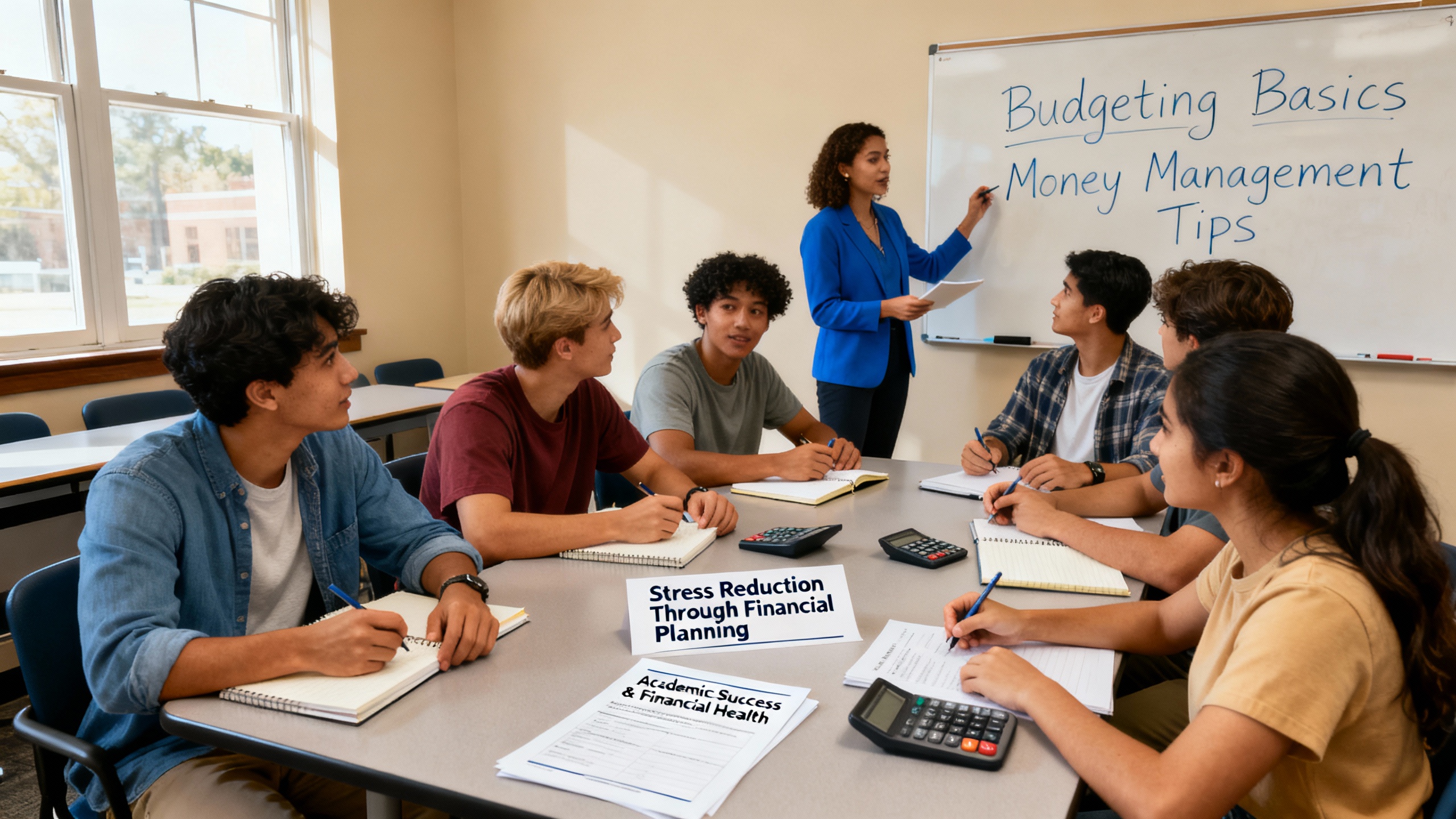Wednesday morning. Three missed calculus classes. Sarah's professor finally notices.
By the time that alert hit the system at California State University, it was already too late. This promising engineering student had been struggling for weeks—skipping dining hall meals, avoiding her study group, logging into Canvas at 3 AM just to stare at assignments she couldn't bring herself to start. The traditional early alert came after the damage was done. Sarah withdrew before anyone could help.
Here's the thing: this happens thousands of times every semester across American campuses, even though 93 percent of four-year institutions have implemented early alert systems. We've got the technology. We've invested millions. Yet students keep slipping through the cracks.
Why? Because most early alert systems are basically expensive smoke detectors that only sound after the house is already burning.
The Problem With Playing Catch-Up
I've been working with campus leaders for years, and they all tell me the same frustrating story. Faculty submit alerts based on what they can see—absences, failed tests, missing homework. But these are symptoms, not causes. Recent research from Oklahoma State University shows that when properly implemented, alert systems can reduce course withdrawals by 30 percent and increase the likelihood of earning grades above C by 4 percent. Pretty impressive, right? Yet most schools aren't seeing anywhere near those results.
The typical workflow goes something like this (and tell me if this sounds familiar):
Week 3: Student starts struggling with personal issues
Week 4: Professor notices declining attendance
Week 5: Alert gets submitted (maybe, if the professor remembers)
Week 6: Alert joins hundreds of others in the queue
Week 7: Outreach finally happens
Week 8: Student has already mentally checked out
Jeff Doyle, a retention expert with decades of experience in higher education, puts it bluntly: "Most people pursue a college like they pursue a spouse. They think, 'Who is my person?' And once they lock onto that, they're not interested in letting go". Students want to succeed. They chose your institution for a reason. When they fail, it's rarely because they suddenly stopped caring—it's because we didn't catch them in time.
The faculty compliance issue makes everything worse. Let's be honest: asking overworked professors to manually log into another system and file reports? Good luck with that. Even the most dedicated faculty members struggle to keep up with alert submissions when they're juggling research, grading, office hours, and their own lives.
Building Something Better: The Multi-Signal Approach
So what does Early Alert 2.0 actually look like in practice?
Think of it as the difference between a single security camera and a comprehensive home security system. Instead of waiting for one person to notice something's wrong, you're gathering signals from everywhere—dining hall card swipes, LMS login patterns, tutoring center visits, even financial aid holds. When these data streams converge, patterns emerge that humans would never spot on their own.
Georgia State University has become the poster child for this approach, monitoring 800 different risk factors for more than 40,000 students daily and generating 90,000 interventions annually based on automated alerts. They're not just tracking grades—they're watching for subtle shifts in behavior that predict academic struggle weeks before it shows up in the classroom.
Here's what makes this revolutionary: the system learns. Machine learning algorithms identify patterns unique to your campus. Maybe students who miss Tuesday morning classes are fine, but those who skip Thursday labs are in trouble. Perhaps a sudden drop in library visits correlates with mental health crises at your school. The AI figures this out and adjusts accordingly.
But—and this is crucial—research from Brookings Institution warns that prediction algorithms can underestimate success for Black and Hispanic students if not properly calibrated. We can't let our tools perpetuate the very inequities we're trying to solve. That's why human oversight remains essential.
The prioritization piece is what really changes the game. Not every alert deserves immediate action. A straight-A student missing one assignment? Probably fine. A first-generation student showing multiple warning signs across different systems? That's your red alert. Smart triage prevents the alert fatigue that kills so many well-intentioned programs.
Making It Real: Your Implementation Roadmap
Alright, you're convinced. Now what?
Start with Coalition Building (Months 1-2)
Forget the technology for a minute. Your first move is political, not technical. You need a cross-functional team that actually has teeth. I'm talking about people who can make decisions, not just make recommendations. Get your VP of Student Affairs and your Provost in the same room. Add IT leadership, institutional research, counseling services, and—critically—respected faculty voices.
This team needs to address the elephant in the room immediately: student privacy. As Laura Ipsen, CEO of Ellucian, notes, "Nearly 60% of surveyed students considered dropping out due to financial stress"—yet many are uncomfortable with institutions tracking their financial behaviors. Create clear, transparent policies about what data you'll collect and how you'll use it. Students should understand they're partners in this process, not subjects under surveillance.
Map Your Data Landscape (Months 2-3)
Most universities are data-rich but insight-poor. You're probably sitting on goldmines of information scattered across dozen of systems that don't talk to each other. Start by auditing what you've got:
LMS engagement metrics (easiest win—this data is usually clean and accessible)
Attendance tracking (if you have it)
Campus card activity (dining, library, gym)
Financial aid status
Academic history
Support service utilization
Don't try to boil the ocean. Pick two or three high-value data sources to start. Once you prove the concept works, expanding becomes much easier.
Design Human-Centered Interventions (Months 3-4)
This is where most implementations fail. They automate existing broken processes instead of reimagining how intervention should work. Research from Civitas Learning emphasizes that effective early alerts must focus on shifts in student behavior rather than just academic performance.
Create intervention tiers based on risk level AND student preferences:
- Tier 1 (Low Risk): Automated email check-in, link to campus resources.
- Tier 2 (Medium Risk): Personalized outreach from an advisor (email/text).
- Tier 3 (High Risk): Mandated meeting with a success coach, coordinated support plan.
Low Risk: Automated nudges via text (students actually read these)
Medium Risk: Peer mentor outreach (less intimidating than faculty contact)
High Risk: Personal phone call within 24 hours (yes, actual phone calls still work)
Critical: Same-day in-person outreach (for mental health concerns especially)
Train your staff to lead with curiosity, not judgment. "Hey, we noticed you might be facing some challenges. How can we help?" beats "You're failing and need to get your act together" every single time.
Launch Small, Learn Fast (Months 4-6)
Pilot with one college or even one large gateway course. Monitor everything—response rates, intervention success rates, and most importantly, student feedback. What felt supportive? What felt invasive? Adjust accordingly.
Kingston University London's approach is instructive—they contact approximately 3,000 students per academic year for low engagement, primarily through text messages. Simple, scalable, effective.
The Human Element Can't Be Automated Away
Let me be absolutely clear about something: AI and predictive analytics are tools, not solutions. As Georgia State has demonstrated, personalized attention works—but it's the human connection that makes the difference.
Students aren't data points. That first-year student showing warning signs might be dealing with a sick parent, financial crisis, or undiagnosed learning disability. An algorithm can flag them; only a human can understand them.
Train your intervention team to approach every interaction with genuine care. Students can smell fake concern from a mile away. They've grown up with targeted advertising and algorithmic manipulation—they know when they're being processed versus when someone actually gives a damn.
And here's something nobody talks about enough: involve students in designing your intervention strategies. They know what support looks like to them. They understand their peers' communication preferences. One retention expert who interviewed over 50 university staff members found that "successful retention isn't just about keeping students enrolled—it's about creating an environment where they can truly thrive".
Some schools have found amazing success with peer intervention programs. Students who've overcome similar challenges provide support and guidance. It's less threatening, more relatable, and surprisingly effective.
Beyond Catching Problems: Building Success
The most exciting part of Early Alert 2.0 isn't preventing failure—it's enabling success. When you can identify students before they struggle, you can connect them with opportunities, not just interventions.
Imagine: your system notices a student excelling in organic chemistry but struggling with writing. Instead of waiting for them to fail English Comp, you proactively connect them with the writing center. Or you identify a first-gen student who's academically solid but not engaging with career services—and you make sure they know about that upcoming internship fair.
Georgia State's success is staggering: the number of bachelor's degrees conferred to African-American students has increased by 103 percent since implementing predictive analytics, and the institution now ranks first nationally among non-profit colleges for bachelor's degrees awarded to African Americans.
But it's not just about equity metrics. Each one percent increase in retention generates $3.18 million in additional revenue for Georgia State. Students save money too—the class of 2016 saved $18 million in tuition and fees compared to 2012, simply by graduating faster.
Common Pitfalls (And How to Dodge Them)
Alert Fatigue Is Real
When everything's an emergency, nothing is. I've seen systems generate thousands of low-value alerts that overwhelm staff and irritate students. Be ruthless about alert quality. Better to catch 100 real problems than flag 1,000 false positives.
Don't Forget the Middle
EAB recently identified the "murky middle"—students with GPAs between 2.0 and 3.0 who are midway through their degrees—as particularly vulnerable. These students often fly under the radar because they're not failing dramatically, but they're at serious risk of stopping out.
Technology Integration Nightmares
Legacy systems. Vendor promises that don't deliver. IT departments stretched too thin. Sound familiar? Start with what you have. Even basic integration between your LMS and student information system can yield powerful insights. Perfect is the enemy of good here.
Privacy Paranoia
Some students (and faculty) will freak out about "Big Brother" surveillance. Address this head-on with transparency. Show them exactly what you're tracking and why. Give them opt-out options for non-critical monitoring. Most importantly, demonstrate that the data leads to support, not punishment.
The Future Is Already Here (It's Just Unevenly Distributed)
We're moving toward a world where early alert isn't early anymore—it's continuous. Imagine systems that don't just react to problems but anticipate them. Mental health monitoring through social connection patterns. Financial stress prediction based on work-study hour changes. Academic struggle prevention through learning style matching.
Karl Kerns, Assistant Professor at Iowa State, nails it: "We need to not be afraid of implementing technology in the classroom. Students are using it whether you want to have your head in the sand or not".
The next frontier involves wellness beyond academics. Two-thirds of college students report feeling lonely, and three in ten report severe psychological distress. Early Alert 2.0 systems are beginning to incorporate social isolation indicators, mental health signals, and belonging metrics. We're not just trying to keep students enrolled—we're trying to keep them alive and thriving.
Some institutions are experimenting with predictive scheduling—using AI to identify course combinations likely to overwhelm certain student profiles. Others are developing "success DNA" profiles that match struggling students with peers who overcame similar challenges.
The technology exists. The evidence is compelling. As one expert notes after reviewing the landscape: "What's particularly encouraging is seeing how institutions are increasingly using technology not just as a tool, but as a bridge to create more meaningful connections with students".
Time to Choose
Look, I get it. Transforming early alert systems requires significant investment—money, time, political capital. But here's the brutal truth: every semester you delay means more students like Sarah falling through the cracks. Students who chose your institution, who believed they belonged there, who could have succeeded with the right support at the right time.
The choice facing campus leadership isn't whether to modernize early alert systems—it's whether you can afford not to. In an era of enrollment cliffs, mental health crises, and unprecedented competition for students, institutions that fail to provide proactive, personalized support won't just lose students. They'll lose their relevance.
Deloitte's 2025 Higher Education Trends report found that only 22% of students find a four-year degree worthwhile if they have to take out loans. Students are questioning the value proposition of higher education like never before. Early Alert 2.0 isn't just about retention—it's about proving that colleges actually care about student success, not just student tuition.
Campus Mind understands that behind every data point is a human story. Behind every alert is a student who's struggling, striving, hoping to make it through. The question isn't whether we have the tools to help them—we do. The question is whether we have the will to use them.
The time for incremental improvement has passed. Students need us to be bold, to be innovative, to be genuinely student-centered in our approach to support. They need Early Alert 2.0, and they need it now.
Because somewhere on your campus right now, there's another Sarah. She's struggling. She's considering giving up. And whether she becomes a dropout statistic or a success story depends on what you do next.
The choice is yours. Choose wisely. Choose quickly. Choose students.
References
Brookings Institution. (2025). Using AI to predict student success in higher education. Retrieved from brookings.edu
Civitas Learning. (2025). Is your early alert system harming student success? Retrieved from civitaslearning.com
Deloitte. (2025). Higher education trends report 2025. Retrieved from deloitte.com
Doyle, J. (2025). Interview on student retention trends. edX Higher Education Trends Guide. Retrieved from edx.org
EAB. (2025). 3 hidden retention challenges facing higher ed in 2025. Retrieved from eab.com
Ellucian. (2024). Student voice report. Retrieved from ellucian.com
Georgia State University. (2024). Approaching student success with predictive analytics. Retrieved from success.gsu.edu
Hanover Research. (2017). Early alert systems in higher education. Retrieved from hanoverresearch.com
Ipsen, L. (2024). As quoted in "New student retention & admission strategies focus on tech." EdTech Magazine. Retrieved from edtechmagazine.com
John N. Gardner Institute for Excellence in Undergraduate Education. (2012). National study of early alert systems. Retrieved from jngi.org
Kerns, K. (2024). As quoted in "New student retention strategies." EdTech Magazine. Retrieved from edtechmagazine.com
Kingston University London. (2024). Student engagement and attendance analytics case study. Retrieved from seatssoftware.com
New America. (2025). Five recommendations for community colleges to equitably implement early alert systems. Retrieved from newamerica.org
Oklahoma State University. (2025). Research shows academic alerts impact grades, withdrawals. Inside Higher Ed. Retrieved from insidehighered.comVerifyed. (2025). 5 proven student retention strategies for 2025: Expert guide. Retrieved from verifyed.io




